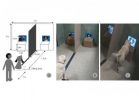(Press-News.org) BOSTON AND CAMBRIDGE, Mass.––Tumors are not factories for the mass production of identical cancer cells, but are, in reality, patchworks of cells with different patterns of gene mutations. In a new study, researchers at Dana-Farber Cancer Institute and the Broad Institute show, more fully than ever before, how these mutations shift and evolve over time in chronic lymphocytic leukemia (CLL) – providing a strobe-like look at the genetic past, present, and future of CLL tumors.
Their report, which will be published online today by the journal Cell, suggests that evolution holds the key to understanding why CLL often recurs after treatment, and to the development of better therapies. The study helps explain why patients with a seemingly similar disease often don't derive the same benefit from therapy, why CLL recurs faster in some patients than others, and why therapy itself may speed the recurrence of the disease.
"One of the biggest challenges that patients with CLL and their physicians face is how to deal with relapse," said study co-senior author, Catherine Wu, MD, of Dana-Farber. "It's been clear for some time that tumors are collections of different subgroups of cells, each with a particular set of gene mutations, and that, over time, some of these subgroups become more prevalent and some less. So the tumor that you initially treat can be quite different, from a genetic standpoint, from the tumor that recurs later on."
For this study, Wu and her colleagues used next-generation gene-sequencing technology to chart changes in close to 100 samples of CLL tissue. "From there," Wu explained, "we began exploring how these different subgroups of cells influence the effectiveness of therapy. What can these subgroups tell us about how the cancer originated and developed, and how – and how long – it will respond to treatment before relapsing?"
Co-senior author Gad Getz, PhD, of the Broad Institute and Massachusetts General Hospital, and colleagues analyzed the genetic material in CLL tissue samples from 149 patients. Getz noted that the analysis was made possible due to the marriage of two tools his team recently developed. The first, a highly sensitive mutation calling method known as MuTect (concurrently published in Nature Biotechnology) can detect mutations present in a small fraction of cells. The second, ABSOLUTE (developed by a co-first author of this work, Scott L. Carter, PhD), uses the detected mutations as well as copy-number alterations to identify sub-populations within the cancer cells, and associates each mutation with the fraction of cancer cells that carried it.
"These tools opened a new window into the complexity of cancer and its evolution," said Getz. "This allowed us to ask which sub-populations of cancer cells increase or decrease with therapy and what happens when treating a patient that has a subset of cancer cells with additional cancer-driving mutations."
Rather than probing the entirety of the cancer cells' DNA, they focused just on the sections of DNA that hold code for making cell proteins. With technology capable of reading the genetic code letter by letter, they scoured the cells' DNA for mutations – or spelling errors – in specific genes. For 18 patients, they sampled CLL cells several years apart, enabling them to track changes in the cells' genetic makeup over time.
Their findings:
By taking genetic "snapshots" of CLL in many patients – some newly diagnosed with the disease, some who had undergone lengthy treatment, some whose disease had recurred – researchers were able to trace changes in the mix of subgroups of cells over time. This enabled them to reconstruct, in effect, a genetic biography of a patient's disease, identifying mutations that cropped up early in the disease, as well as those that came later.
Certain "driver" mutations – named for their ability to spur cancer formation and growth – tend to appear early in the disease's development, while others emerge over time. The researchers discovered that the initial driver mutations tend to be unique to malignancies that originate in immune system B cells (such as CLL), while those that arose later are often found in other malignancies.
In some cases, subgroups of cancer cells that had a fairly minimal presence before treatment came to predominate after treatment. "One way to think of this is that therapy 'leveled the field,' reducing the size of all the subgroups to the same basic level," Wu remarked. "The subgroups were then on an equal footing in competing with one another for survival. The ones that originally were somewhat rare may have gained a competitive advantage."
The instances where patients donated CLL samples several years apart proved particularly interesting. Cells from patients who received chemotherapy during those years underwent a great deal of genetic evolution, showing marked increases in some cell subgroups and decreases in others, whereas samples from patients who didn't undergo such therapy were remarkably stable. "This suggests that, in some patients, treatment can actually hasten the evolution of the disease and speed its recurrence," Wu observed.
Researchers were able to identify the cell subgroups that became more prominent in the later stages of the disease. In patients where these subgroups were particularly predominant, the disease was likely to worsen rapidly, requiring prompt therapy. "In other words, the faster the disease is evolving, the more likely it is to take an aggressive form," Wu explained.
From a practical point of view, advanced "sequencing" technology – which analyzes genes into their most basic components – combined with new analytical tools offers a feasible way to scan a large number of tissue samples, which is critical for finding links between gene mutations and the features of the disease itself and its response to treatment. The researchers' decision to concentrate on the protein-coding portions of DNA enabled them to scan more than 150 samples at a reasonable cost and in a reasonable amount of time, Wu related.
"Our findings have important implications for the future of diagnostic programs for patients with CLL," said the study's co-first author, Dan Landau, MD, of Dana-Farber, the Broad Institute, and Yale Cancer Center. "They can help us better understand how to not only predict which patients are likely to relapse, but also predict the genetic makeup of the relapse and tailor our therapy to those specific future mutations. Perhaps more importantly, these data challenge us to understand cancer evolution better in order to develop novel therapeutic paradigms that address the cancer evolutionary landscape."
INFORMATION:
The study's other co-first author is Petar Stojanov, of Dana-Farber and the Broad Institute. Co-authors are Jennifer Brown, MD PhD, Kristen Stevenson MS, Lili Wang, PhD, Youzhong Wan, PhD, Wandi Zhang, Alexander Vartanov, Stacey Fernandes, Bethany Tesar, and Donna Neuberg, ScD, of Dana-Farber; Aaron McKenna, PhD, Michael Lawrence, PhD, Carrie Sougnez, Chip Stewart, Andrey Sivachenko, PhD, Gordon Saksena, Kristian Cibulskis, Stacey Gabriel, PhD, and Eric Lander, PhD, of the Broad Institute; Sachet Shukla, PhD, and Matthew Meyerson, MD, PhD, of Dana-Farber and the Broad; and Nir Hacohen, PhD, of the Broad Institute and Massachusetts General Hospital.
The study was supported by funding from the National Institutes of Health (NHGRI-U54HG003067, NIH K23 CA115682, NHLBI 1RO1HL103532-01, and NCI 1R01CA155010-01A1), the Melton and Rosenbach Funds, the American Society of Hematology, the Blavatnik Family Foundation, the American Cancer Society, the Damon-Runyon Cancer Research Foundation, and the American Association for Cancer Research.
About Dana-Farber Cancer Institute
Dana-Farber Cancer Institute (www.dana-farber.org) is a principal teaching affiliate of the Harvard Medical School and is among the leading cancer research and care centers in the United States. It is a founding member of the Dana-Farber/Harvard Cancer Center (DF/HCC), designated a comprehensive cancer center by the National Cancer Institute. It provides adult care with Brigham and Women's Hospital as Dana-Farber/Brigham and Women's Cancer Center, and it provides pediatric care with Children's Hospital Boston as Dana-Farber/Children's Hospital Cancer Center. Dana-Farber is the top-ranked cancer center in New England, according to U.S. News & World Report, and one of the largest recipients among independent hospitals of National Cancer Institute and National Institutes of Health grant funding. Follow Dana-Farber on Twitter: @dana-farber or Facebook.
About the Broad Institute of MIT and Harvard
The Eli and Edythe L. Broad Institute of MIT and Harvard was founded in 2003 to empower this generation of creative scientists to transform medicine with new genome-based knowledge. The Broad Institute seeks to describe all the molecular components of life and their connections; discover the molecular basis of major human diseases; develop effective new approaches to diagnostics and therapeutics; and disseminate discoveries, tools, methods and data openly to the entire scientific community.
Founded by MIT, Harvard and its affiliated hospitals, and the visionary Los Angeles philanthropists Eli and Edythe L. Broad, the Broad Institute includes faculty, professional staff and students from throughout the MIT and Harvard biomedical research communities and beyond, with collaborations spanning over a hundred private and public institutions in more than 40 countries worldwide. For further information about the Broad Institute, go to www.broadinstitute.org.
Study tracks leukemia's genetic evolution, may help predict disease course, tailor care
2013-02-14
ELSE PRESS RELEASES FROM THIS DATE:
Gene invaders are stymied by a cell's genome defense
2013-02-14
Gene wars rage inside our cells, with invading DNA regularly threatening to subvert our human blueprint. Now, building on Nobel-Prize-winning findings, UC San Francisco researchers have discovered a molecular machine that helps protect a cell's genes against these DNA interlopers.
The machine, named SCANR, recognizes and targets foreign DNA. The UCSF team identified it in yeast, but given the similarity of yeast and human cells, comparable mechanisms might also be found in humans, where they might serve to lower the burden of inherited human disease and death, the researchers ...
Environment schemes for kids influence parents' behavior
2013-02-14
Teaching children about the environment can affect the knowledge and behaviour of their parents, according to new research.
Scientists from Imperial College London surveyed the families of 160 schoolchildren in the Seychelles, some of whom took part in educational activities about the island's valuable wetland resources.
They found that the parents of children who took part in the wetland activities were more knowledgeable about wetlands and, were more inclined to undertake 'environmentally friendly' behaviours such as conserving water in their homes.
The findings ...
Our primitive reflexes may be more sophisticated than they appear, study shows
2013-02-14
Supposedly 'primitive' reflexes may involve more sophisticated brain function than previously thought, according to researchers at Imperial College London.
The Vestibular-Ocular Reflex (or VOR), common to most vertebrates, is what allows us to keep our eyes focused on a fixed point even while our heads are moving. Up until now, scientists had assumed this reflex was controlled by the lower brainstem, which regulates eating, sleeping and other low-level tasks.
Researchers at Imperial's Division of Brain Sciences conducted tests to examine this reflex in left- and right-handed ...
Indian plant could play key role in death of cancer cells
2013-02-14
AUGUSTA, Ga. – Scientists at the Georgia Regents University Cancer Center have identified an Indian plant, used for centuries to treat inflammation, fever and malaria, that could help kill cancer cells.
Cancer cells typically avoid death by hijacking molecular chaperones that guide and protect the proteins that ensure normal cellular function and then tricking them into helping mutated versions of those proteins stay alive, says Dr. Ahmed Chadli, a researcher in the Molecular Chaperone Program at the GRU Cancer Center and senior author of the study named the Journal ...
New LA BioMed research identifies effective treatment for common gynecological problem
2013-02-14
LOS ANGELES (Feb. 14, 2013) – New research from the Los Angeles Biomedical Research Institute (LA BioMed) found a progestogen-only treatment halted bleeding in women suffering from extremely heavy periods, according to the study published online by the American Journal of Obstetrics and Gynecology.
"Excessive uterine bleeding is a common problem we see in gynecological practices and emergency rooms. It can interfere with women's daily activities and put them at risk for anemia and other more serious health consequences caused by blood loss," said Anita L. Nelson, MD, ...
Love of musical harmony is not nature but nurture
2013-02-14
Our love of music and appreciation of musical harmony is learnt and not based on natural ability – a new study by University of Melbourne researchers has found.
Associate Professor Neil McLachlan from the Melbourne School of Psychological Sciences said previous theories about how we appreciate music were based on the physical properties of sound, the ear itself and an innate ability to hear harmony.
"Our study shows that musical harmony can be learnt and it is a matter of training the brain to hear the sounds," Associate Professor McLachlan said.
"So if you thought ...
Dogs spot the dog
2013-02-14
Dogs pick out faces of other dogs, irrespective of breeds, among human and other domestic and wild animal faces and can group them into a category of their own. They do that using visual cues alone, according to new research by Dr. Dominique Autier-Dérian from the LEEC and National Veterinary School in Lyon in France and colleagues. Their work, the first to test dogs' ability to discriminate between species and form a "dog" category in spite of the huge variability within the dog species, is published online in Springer's journal Animal Cognition.
Individuals from the ...
Combining quantum information communication and storage
2013-02-14
Aalto University researchers in Finland have successfully connected a superconducting quantum bit, or qubit, with a micrometer-sized drum head. Thus they transferred information from the qubit to the resonator and back again.
- This work represents the first step towards creating exotic mechanical quantum states. For example, the transfer makes it possible to create a state in which the resonator simultaneously vibrates and doesn't vibrate, says professor Mika Sillanpää from Aalto University, who runs the research group.
A qubit is the quantum-mechanical equivalent ...
Gut microbes could determine the severity of melamine-induced kidney disease
2013-02-14
Microbes present in the gut can affect the severity of kidney disease brought on by melamine poisoning, according to an international study led by Professor Wei Jia at the University of North Carolina in collaboration with the research group of Professor Jeremy Nicholson at Imperial College London.
In 2008, nearly 300,000 Chinese children were hospitalised with kidney disease brought on by supplies of powdered milk deliberately contaminated with melamine to boost the apparent protein content. Although melamine was known to combine with uric acid in the children's bodies ...
What green algae are up to in the dark
2013-02-14
How green algae produce hydrogen in the dark is reported by biologists at the Ruhr-Universität Bochum in the "Journal of Biological Chemistry". Hereby, they have uncovered a mechanism for the production of the gas which has hardly been examined before; usually, researchers are interested in light-driven hydrogen synthesis. "Hydrogen could help us out of the energy crisis", says Prof. Dr. Thomas Happe, head of the working group Photobiotechnology. "If you want to make green algae produce more hydrogen, it is important to understand all the production pathways."
Green algae ...





